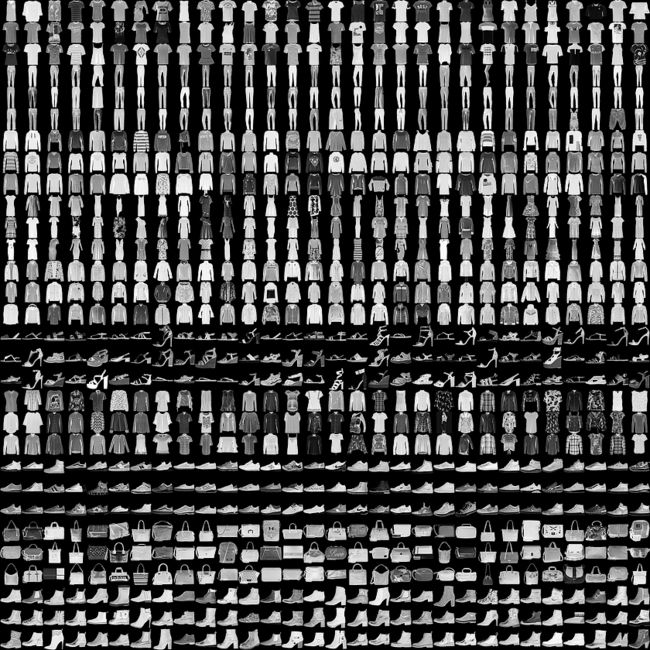CNN学习系列:千里之行始于足下——使用PyTorch复现经典LeNet网络
导语:
1998年,Lecun等人在论文Gradient-Based Learning Applied to Document Recognition里第一次定义了CNN网络结构,该网络被称为LeNet,成为CNN的开山鼻祖。
该模型有1个输入层,2个卷积层,2个池化层,2个全连接层,1个输出层。此处所使用的的数据集,即是Lecun当年用到的数据集,MNIST。
这里有一个手写数字识别的可视化网站,借助它能直观地分析LeNet运行的过程。
另附:卷积网络的可视化解释
卷积
可参考我之前写的计算机视觉(北邮鲁鹏)学习笔记(一)中的卷积部分。
每个卷积层可以有多个kernel,卷积的目的是为了提取图像的特征,什么叫特征?边缘、形状、纹理等多种多样,根据kernel设置的不同可以得到不同的特征。图像经过卷积后的输出,叫特征图(Feature Maps)。
池化
池化或子采样层通常紧跟在CNN中的卷积层之后。
池化操作通常也叫做子采样(Subsampling)或降采样、下采样(Downsampling)(不是瞎采样啊喂),保留最重要部分并丢弃其余部分,主要是为了减少过拟合率,由于池化后的图变得更小,也加快了计算速度。
常用的池化操作:
最大值池化(max-pooling):对邻域内特征点取最大值
平均值池化(mean-pooling):对邻域内特征点求平均
其他池化操作:
卷积神经网络中的各种池化操作
//TODO
池化及反向传播??
像素计算
假设输入层是 32 × 32 = 1024 32 \times 32 = 1024 32×32=1024个像素,第一层卷积,有6个kernel,大小为 5 × 5 5 \times 5 5×5,则特征图的总像素为 6 × 28 × 28 = 4704 6 \times 28 \times 28 = 4704 6×28×28=4704。
池化的kernel大小为2,步长为2,则对卷积之后的6个特征图进行池化,总像素为 6 × 14 × 14 = 1176 6 \times 14 \times 14 = 1176 6×14×14=1176。
第二层卷积,有16个kernel,大小为 5 × 5 5 \times 5 5×5,则特征图的总像素为 16 × 10 × 10 = 1600 16 \times 10 \times 10 = 1600 16×10×10=1600。
第二层池化,kernel大小为2,步长为2,总像素为 16 × 5 × 5 = 400 16 \times 5 \times 5 = 400 16×5×5=400。
使用PyTorch复现该网络
先来搭建一下网络的结构
import torch
import torch.optim as optim
import torchvision
import torch.nn as nn
from torch.nn import functional as F
import torch.utils.data
import torchvision.transforms as transforms
class LeNet(nn.Module):
def __init__(self):
super(LeNet, self).__init__()
self.conv1 = nn.Conv2d(in_channels=1, out_channels=6, kernel_size=5, padding=2)
self.conv2 = nn.Conv2d(in_channels=6, out_channels=16, kernel_size=5)
self.fc1 = nn.Linear(in_features=16 * 5 * 5, out_features=120)
self.fc2 = nn.Linear(in_features=120, out_features=84)
self.out = nn.Linear(in_features=84, out_features=10)
def forward(self, t):
t = F.relu(self.conv1(t)) # 激活操作
t = F.max_pool2d(t, kernel_size=2, stride=2) # 池化操作
t = F.relu(self.conv2(t))
t = F.max_pool2d(t, kernel_size=2, stride=2)
t = t.view(-1, num_flat_features(t))
t = F.relu(self.fc1(t))
t = F.relu(self.fc2(t))
t = self.out(t)
return t
def num_flat_features(t):
size = t.size()[1:]
num_features = 1
for s in size:
num_features *= s
return num_features
值得一提的是,MNIST“手写数字”数据集已经被FashionMNIST替代了,详见Fashion-MNIST,它由 Zalando(一家德国的时尚科技公司)旗下的研究部门提供。其涵盖了来自 10 种类别的共 7 万个不同商品的正面图片。
它长这样:

FashionMNIST 的大小、格式和训练集/测试集划分与原始的 MNIST 完全一致。60000/10000 的训练测试数据划分,28x28 的灰度图片。你可以直接用它来测试你的机器学习和深度学习算法性能,且不需要改动任何的代码。
PyTorch已经内置了获取该数据集的方法。
train_set = torchvision.datasets.FashionMNIST(
root='./data/',
train=True,
download=True,
transform=transforms.Compose([
transforms.ToTensor()
])
)
train_loader = torch.utils.data.DataLoader(train_set, batch_size=100)
训练模型
use_gpu = torch.cuda.is_available() # GPU是否可用
le_net = LeNet()
if use_gpu:
le_net = le_net.cuda()
print('USE GPU')
else:
print('USE CPU')
optimizer = optim.Adam(le_net.parameters(), lr=0.001)
def get_num_correct(preds, labels):
return preds.argmax(dim=1).eq(labels).int().sum().item()
for epoch in range(100):
total_loss = 0
total_correct = 0
for batch in train_loader: # Get Batch
images, labels = batch
if use_gpu:
images, labels = images.cuda(), labels.cuda()
preds = le_net(images)
loss = F.cross_entropy(preds, labels) # 交叉熵作损失函数
optimizer.zero_grad()
loss.backward()
optimizer.step()
total_loss += loss.item()
total_correct += get_num_correct(preds, labels)
print('eopch:', epoch, "total_correct:", total_correct, "loss:", total_loss, 'precision:', total_correct / len(train_set))




